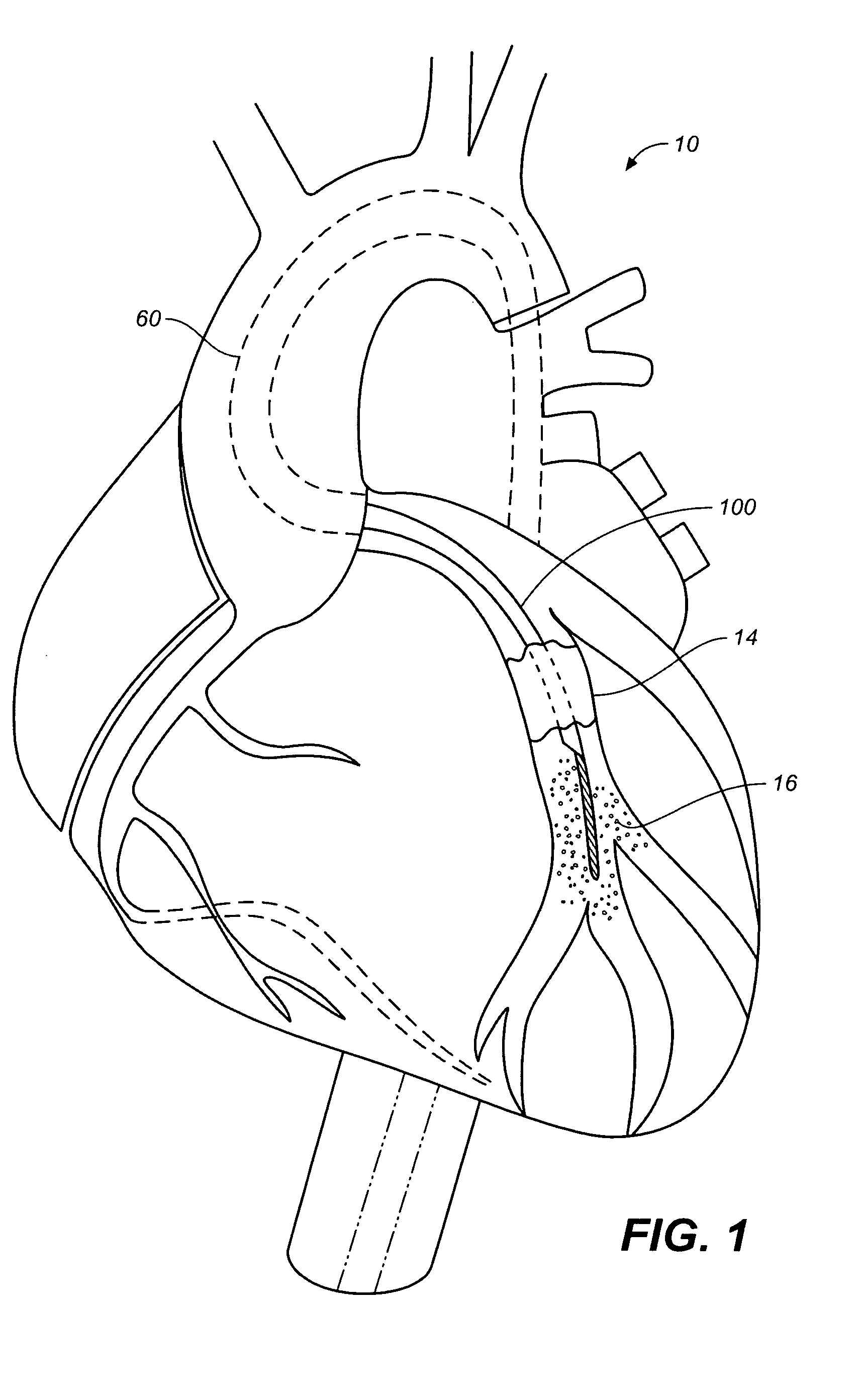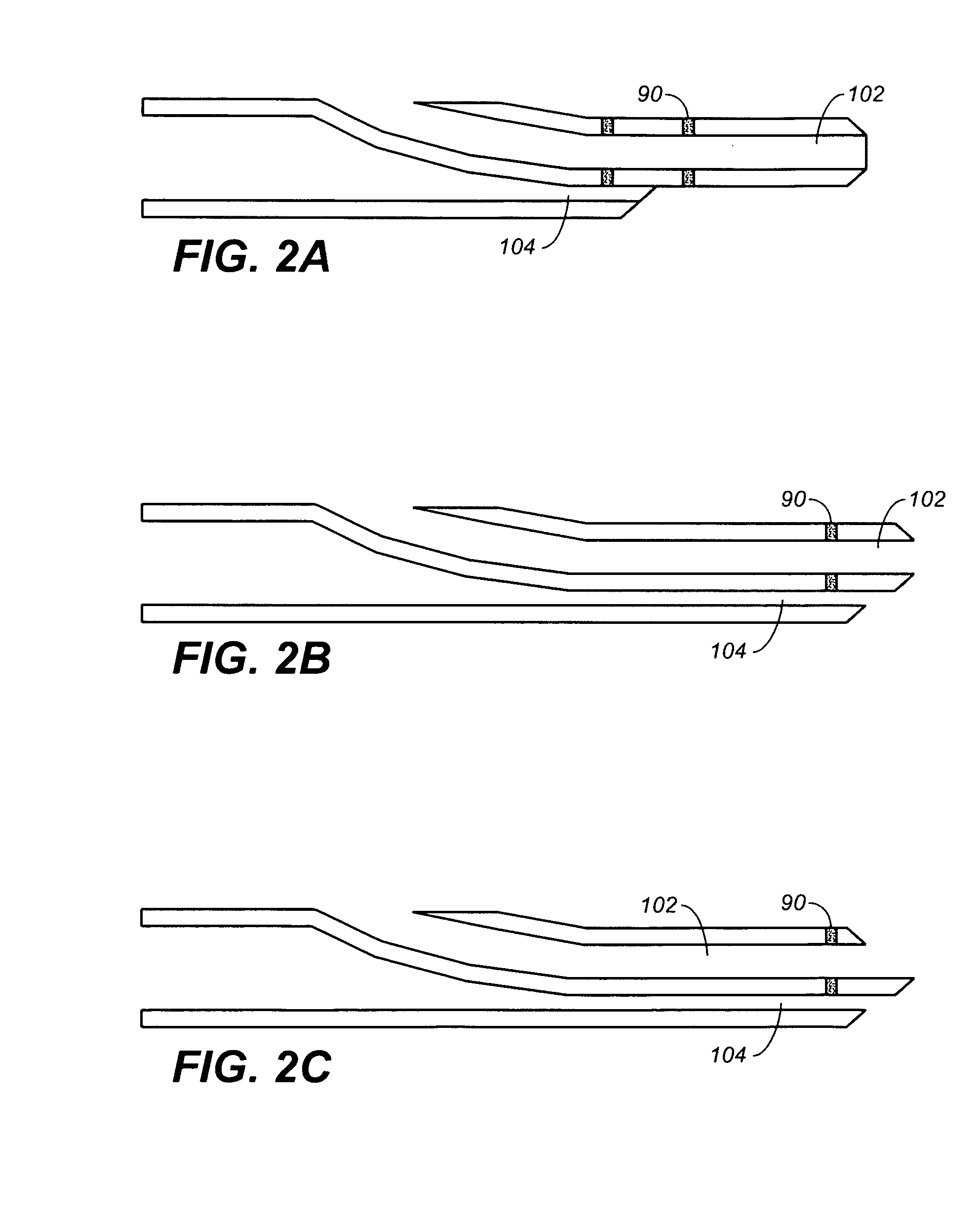Integrated device for ischemic treatment
a technology of ischemic treatment and integrated devices, which is applied in the field of intravascular catheters, can solve the problems of distal embolization, blockage of microcirculation and capillaries, poor outcome of using these techniques, etc., and achieves the effects of minimizing the break up of obstruction, low profile, and smooth traction
- Summary
- Abstract
- Description
- Claims
- Application Information
AI Technical Summary
Benefits of technology
Problems solved by technology
Method used
Image
Examples
Embodiment Construction
[0020]This present invention generally relates to catheters and more particularly to intravascular catheters used to protect the distal vasculature, to improve tissue survival, and to accelerate clearance of acute blocked vessels. The following description is presented to enable one of ordinary skill in the art to make and use the invention and is provided in the context of a patent application and its requirements. Various modifications to the preferred embodiment and the generic principles and features described herein will be readily apparent to those skilled in the art. Thus, the present invention is not intended to be limited to the embodiment shown but is to be accorded the widest scope consistent with the principles and features described herein.
Definitions
[0021]Percutaneous Coronary Intervention (PCI), interventional or endovascular procedure has the same meaning for the treatment of the heart.
[0022]Other words for PCI or similar approach: interventional procedures, interve...
PUM
 Login to View More
Login to View More Abstract
Description
Claims
Application Information
 Login to View More
Login to View More - R&D
- Intellectual Property
- Life Sciences
- Materials
- Tech Scout
- Unparalleled Data Quality
- Higher Quality Content
- 60% Fewer Hallucinations
Browse by: Latest US Patents, China's latest patents, Technical Efficacy Thesaurus, Application Domain, Technology Topic, Popular Technical Reports.
© 2025 PatSnap. All rights reserved.Legal|Privacy policy|Modern Slavery Act Transparency Statement|Sitemap|About US| Contact US: help@patsnap.com



